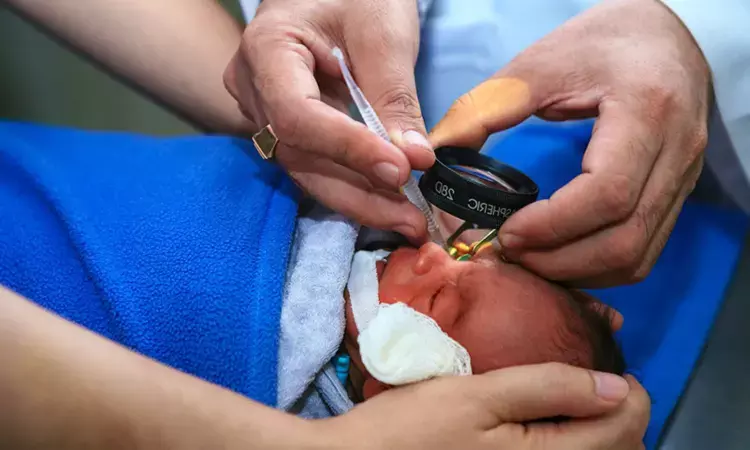- Home
- Medical news & Guidelines
- Anesthesiology
- Cardiology and CTVS
- Critical Care
- Dentistry
- Dermatology
- Diabetes and Endocrinology
- ENT
- Gastroenterology
- Medicine
- Nephrology
- Neurology
- Obstretics-Gynaecology
- Oncology
- Ophthalmology
- Orthopaedics
- Pediatrics-Neonatology
- Psychiatry
- Pulmonology
- Radiology
- Surgery
- Urology
- Laboratory Medicine
- Diet
- Nursing
- Paramedical
- Physiotherapy
- Health news
- Fact Check
- Bone Health Fact Check
- Brain Health Fact Check
- Cancer Related Fact Check
- Child Care Fact Check
- Dental and oral health fact check
- Diabetes and metabolic health fact check
- Diet and Nutrition Fact Check
- Eye and ENT Care Fact Check
- Fitness fact check
- Gut health fact check
- Heart health fact check
- Kidney health fact check
- Medical education fact check
- Men's health fact check
- Respiratory fact check
- Skin and hair care fact check
- Vaccine and Immunization fact check
- Women's health fact check
- AYUSH
- State News
- Andaman and Nicobar Islands
- Andhra Pradesh
- Arunachal Pradesh
- Assam
- Bihar
- Chandigarh
- Chattisgarh
- Dadra and Nagar Haveli
- Daman and Diu
- Delhi
- Goa
- Gujarat
- Haryana
- Himachal Pradesh
- Jammu & Kashmir
- Jharkhand
- Karnataka
- Kerala
- Ladakh
- Lakshadweep
- Madhya Pradesh
- Maharashtra
- Manipur
- Meghalaya
- Mizoram
- Nagaland
- Odisha
- Puducherry
- Punjab
- Rajasthan
- Sikkim
- Tamil Nadu
- Telangana
- Tripura
- Uttar Pradesh
- Uttrakhand
- West Bengal
- Medical Education
- Industry
Nailfold capillaroscopy noninvasive method for early detection of retinopathy of prematurity in infants

USA: A recent study published in The Journal of Pediatrics has revealed nailfold microvascular density assessed during the life's first month to be a promising, noninvasive biomarker for identifying premature infants at the highest risk for retinopathy of prematurity (ROP) before detection on an eye exam.
The research from Ann & Robert H. Lurie Children's Hospital of Chicago could spare many premature infants from undergoing invasive eye exams for ROP detection. ROP is the most common cause of lifelong blindness in children in the US.
ROP is caused by an abnormal development of small blood vessels on the retina. Isabelle De Plaen, MD, and colleagues found that imaging the capillaries in the nailbed of preemies within the first month of life using a non-invasive technique called nailbed capillaroscopy can identify infants at high risk for developing ROP. This screening could eliminate the need to evaluate all premature infants with eye exams about a month later. Findings were published in the Journal of Pediatrics.
“Abnormal systemic vascular development starts much earlier than we thought. By measuring the nailbed capillary density soon after birth, we can identify premature infants at higher risk for developing ROP long before it is detectable by an eye exam,” said Dr. De Plaen, senior author and neonatologist at Lurie Children’s, as well as Professor of Pediatrics at Northwestern University Feinberg School of Medicine. “Earlier identification of these infants reduces the need to subject all premature babies to highly invasive eye exams. Our findings might also lead to the development of earlier preventive or therapeutic interventions for ROP and other complications of prematurity associated with maldevelopment of the microvasculature.”
ROP occurs in about 1/500-1/1,000 premature infants. It affects 33%-60% of babies with very low birth weight (less than 1,500g).
In the cohort of 32 premature neonates they studied, Dr. De Plaen and colleagues found that nailbed capillary density was higher in babies who later developed ROP. Microvascular density in the first month of life also correlated with the severity of ROP.
“The differences we found in microvascular density were most striking near birth, suggesting that perturbed microvascular development may begin in utero during the perinatal period, impacting organ microvascular development,” said Dr. De Plaen. “We speculate that nailfold microvascular density quantification has the potential to help further characterize the link between the uterine environment, placental health and outcomes of preterm birth so that we can improve those outcomes.”
Reference:
York, D., Falciglia, G. H., Managlia, E., Yan, X., Yoon, H., Hamvas, A., Kirchenbuechler, D., Arvanitis, C., & De Plaen, I. G. (2023). Nailfold Capillaroscopy: A Promising, Noninvasive Approach to Predict Retinopathy of Prematurity. The Journal of Pediatrics, 259, 113478. https://doi.org/10.1016/j.jpeds.2023.113478
Dr Kamal Kant Kohli-MBBS, DTCD- a chest specialist with more than 30 years of practice and a flair for writing clinical articles, Dr Kamal Kant Kohli joined Medical Dialogues as a Chief Editor of Medical News. Besides writing articles, as an editor, he proofreads and verifies all the medical content published on Medical Dialogues including those coming from journals, studies,medical conferences,guidelines etc. Email: drkohli@medicaldialogues.in. Contact no. 011-43720751


